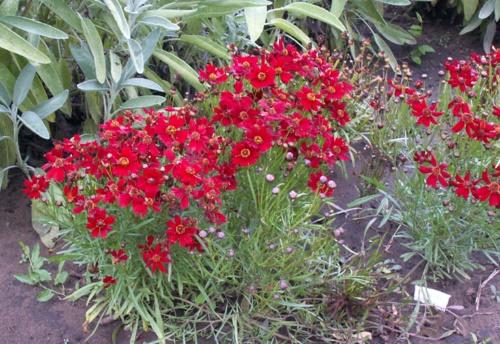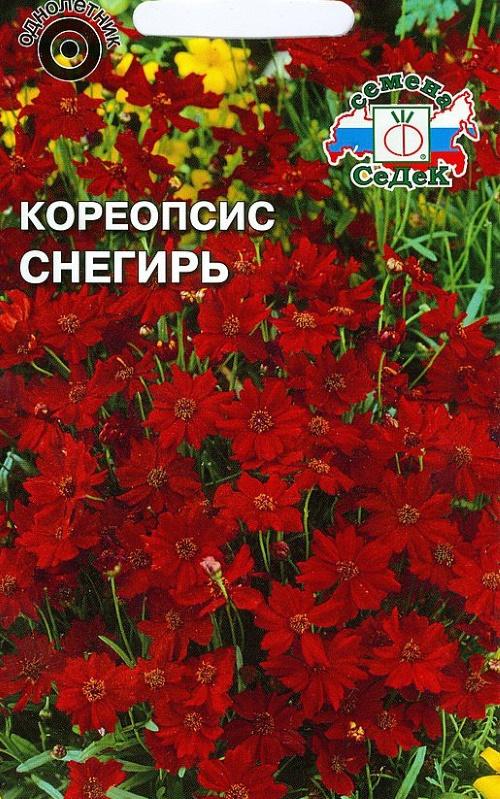Coreopsis dyeing bullfinch - unpretentious and abundantly flowering compact bush
 The yellow flowers of coreopsis with a convex center, bordered by wide petals, really resemble chamomile. But among his numerous family there is a bright handsome man with a rich dark red color - coreopsis dyeing Bullfinch. It differs from its sunny relatives not only in its deep noble color, but also in its unpretentious character. Unlike most species that prefer the sun, the Bullfinch is able to bloom even in a semi-shady flower bed. In addition, he does not need fertile soil, but the bushes feel great on sandstones.
The yellow flowers of coreopsis with a convex center, bordered by wide petals, really resemble chamomile. But among his numerous family there is a bright handsome man with a rich dark red color - coreopsis dyeing Bullfinch. It differs from its sunny relatives not only in its deep noble color, but also in its unpretentious character. Unlike most species that prefer the sun, the Bullfinch is able to bloom even in a semi-shady flower bed. In addition, he does not need fertile soil, but the bushes feel great on sandstones.
Description of the plant

At the end of June, the plant produces thin peduncles, on the tops of which flowers flaunt. They are quite large, up to 4 cm in diameter, and consist of two types of petals. The dark brown tubular petals are gathered in a convex core, which is framed by one row of dark red reed petals. Flowering is abundant and long, up to the first frost. Small seeds ripen in flattened capsules.
Coreopsis is called dyeing because its flowers are a natural dye. They are used to dye fabrics and yarns red.
Coreopsis dyeing bullfinch: cultivation features
 The annual plant is propagated by the seed method. You can sow seeds:
The annual plant is propagated by the seed method. You can sow seeds:
- immediately into open ground at the end of April;
- for seedlings (in March) with a transplant to a flower bed in early May.
Coreopsis reproduces well by self-seeding. Seeds that have fallen to the ground sprout either in autumn or in spring.
One of the main advantages of dyeing coreopsis is the absence of special requirements for the place and soil of cultivation. It grows and blooms even in partial shade, just fewer buds and they are a little smaller. And the plant will be able to reveal its beauty to the maximum on light sandy ground. Moreover, heavy, fertile soil negatively affects flowering, reducing its quantity and duration.
In leaving, Bullfinch is also unpretentious. It tolerates drought well and only needs watering if it hasn't rained for a long time. Coreopsis needs additional feeding only when the soil is completely "skinny". For this you can use mineral complexes. And to prolong flowering, you should cut off the faded inflorescences.